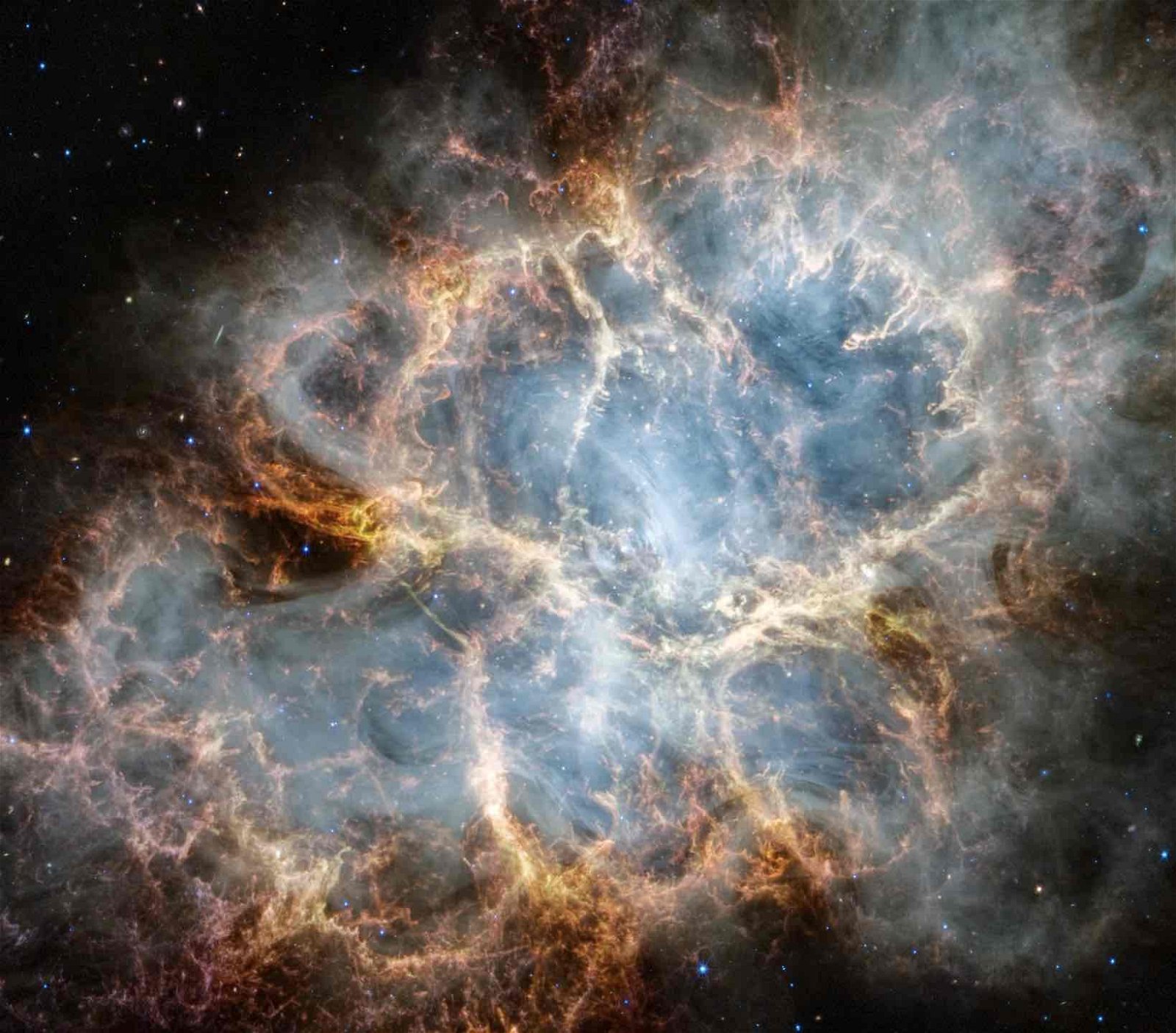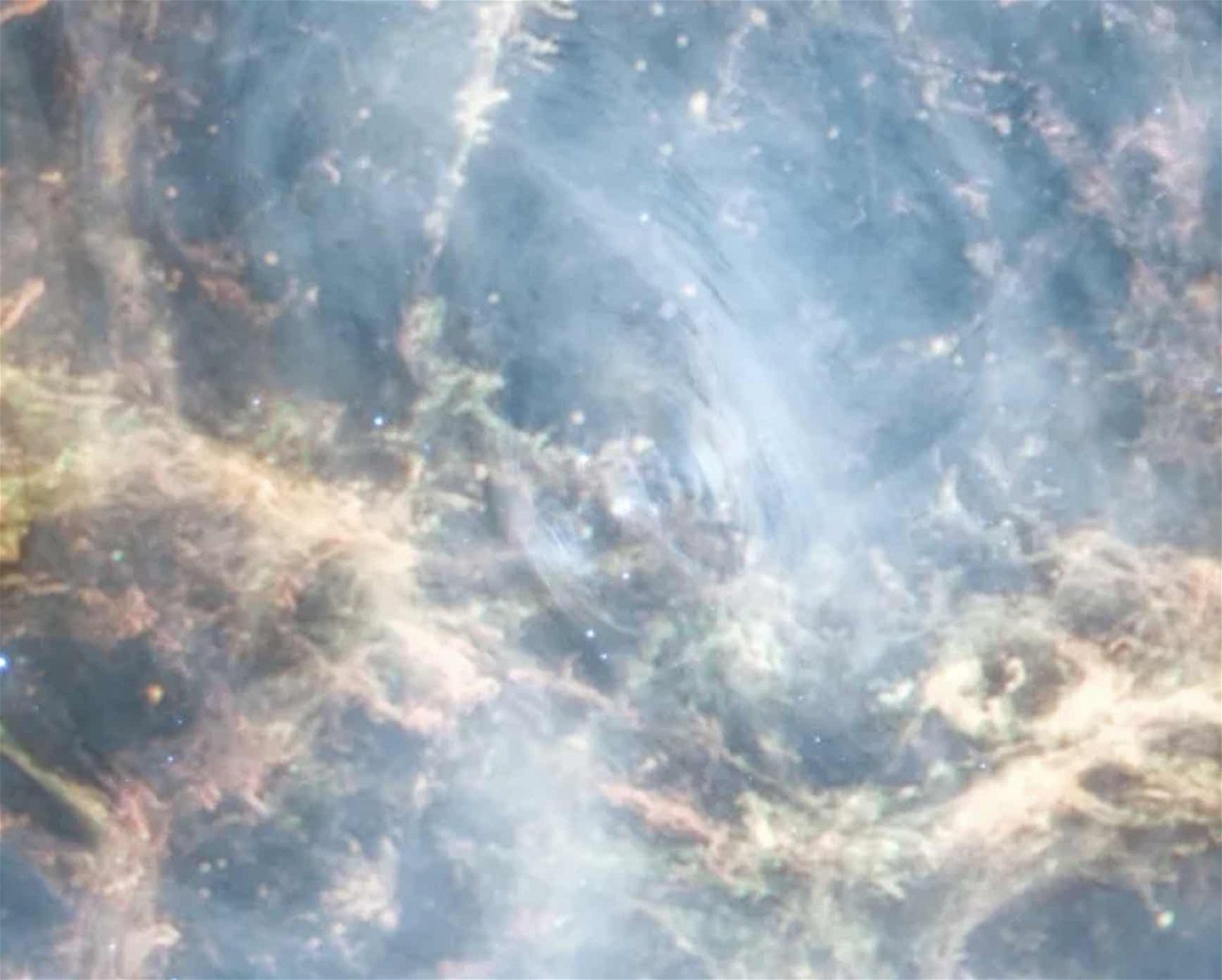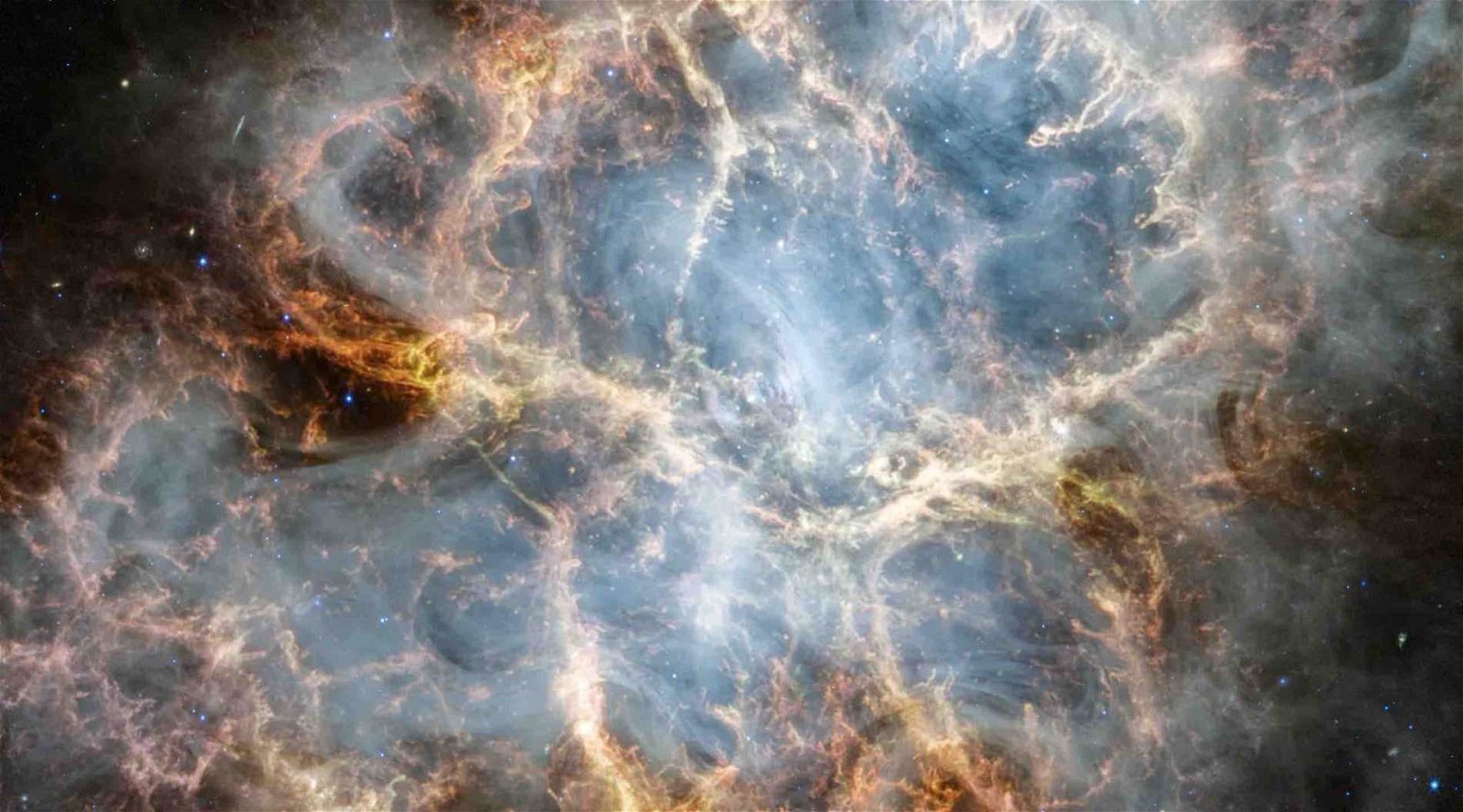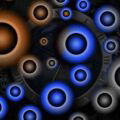The mysterious Crab Nebula appears like it has never been seen in new images captured by NASA’s James Webb Space Telescope, revealing new clues about its origin.
Close to 6,500 light years away and located within the Taurus constellation, the massive supernova that is believed to have created the nebula was observed by Early Chinese astronomers in 1054, who noted the sudden appearance of the unusual “guest star.” Centuries later in the early 1840s, William Parsons, the 3rd Earl of Rosse, observed the nebula through a 36-inch telescope and produced drawings of the supernova’s remnant, which bore a superficial resemblance to a crab with arms.
Today, astronomers have remained fascinated with this unique and irregular patch of stellar material, at the center of which lies the first known pulsar to have been observed visually.
Now, with help from new imagery collected by the high-resolution instruments aboard NASA’s premiere orbital space science observatory, the James Webb Space Telescope, astronomers are seeing the Crab Nebula quite literally in an all-new light.


The Crab Nebula, Seen in a New Light
The new imagery relied on Webb’s Near-Infrared Camera, or NIRCam, and its MIRI (Mid-Infrared Instrument), revealing new details about the structure of the nebula that provide more clues about its origin than previous imagery collected by NASA’s Hubble Space Telescope. Among the key differences are the structures resembling a cage of gaseous filaments, which Webb’s infrared imagery reveals in red-orange coloration in the new images.
Additionally, new details about the central portions of the Crab Nebula reveal emissions from grains of dust, which appear in green, yellow, and white coloration, which astronomers had never seen before prior to Webb.


“Webb’s sensitivity and spatial resolution allow us to accurately determine the composition of the ejected material, particularly the content of iron and nickel, which may reveal what type of explosion produced the Crab Nebula,” said Tea Temim, the researcher leading the current effort to study the Crab Nebula at Princeton University, in a NASA statement.
Also seen in the images is a wind emanating from the nebula’s pulsar, which is quickly expanding a shell of gas and dust that surrounds it. At the same time, closer to the core of the supernova remnant, areas of yellow, white, and green represent dusty structures that form loops within the remnant’s interior.
Synchrotron Radiation Revealed
Another fascinating element revealed in the new Webb images of the Crab Nebula is evidence of synchrotron radiation, which results from the movement of charged particles at relativistic speeds along magnetic field lines. The radiation results from the strong magnetic field of the nebula’s pulsar, which drives particles to extreme speeds, resulting in the emission of radiation as the particles follow magnetic field lines.


In the new Webb images, the telescope’s NIRCam instrument captured this unique form of radiation that appears as smoky areas within the nebula’s interior.
Temim’s team was able to determine from these smoky wisps, which form a circular pattern, where the heart of the nebula’s pulsar is located. The powerful, rapidly rotating neutron star is encircled by a series of white ribbons of synchrotron radiation, which outline the pulsar’s magnetic field.
One unusual feature detected in the new Webb images is the sharp inward curve or “slimming” of the dust surrounding the pulsar, which the team believes could be the result of the confinement of the wind expansion emanating from the original supernova blast by a belt of more dense, gaseous material.
To complement the new Webb imagery, additional data collected by the telescope’s predecessor, Hubble, will likely help to further expand our knowledge of the Crab Nebula and its formation in the coming year. The new Hubble data will be notable as it will be the first time in two decades that the telescope has observed emission lines from the Crab Nebula, a celestial wonder that continues to capture the fascination of astronomers worldwide.
Micah Hanks is the Editor-in-Chief and Co-Founder of The Debrief. He can be reached by email at micah@thedebrief.org. Follow his work at micahhanks.com and on Twitter: @MicahHanks.

